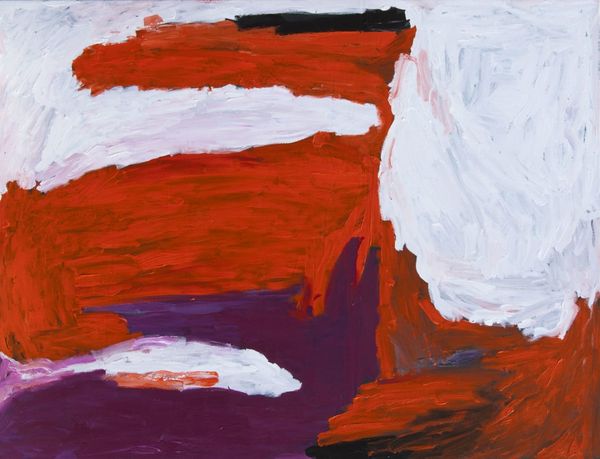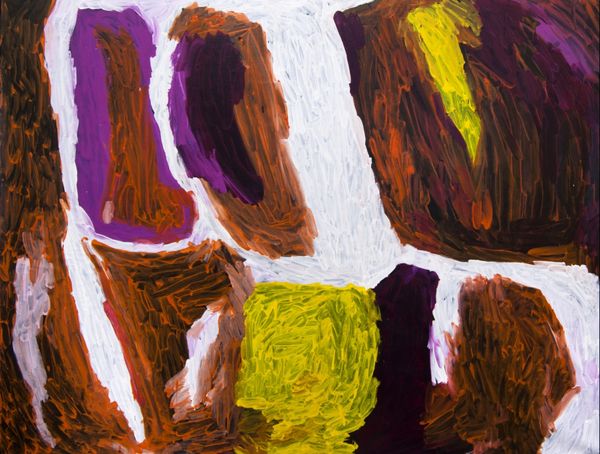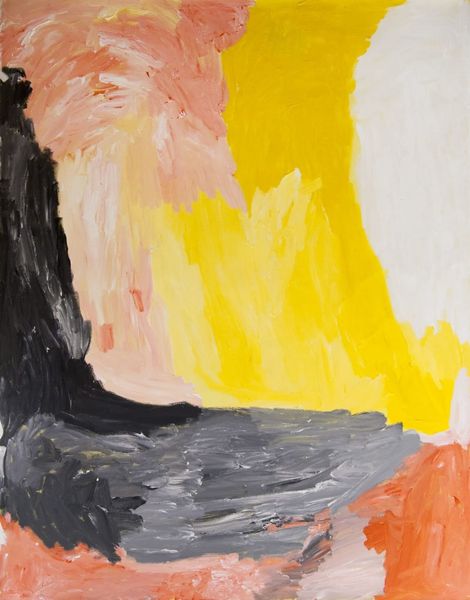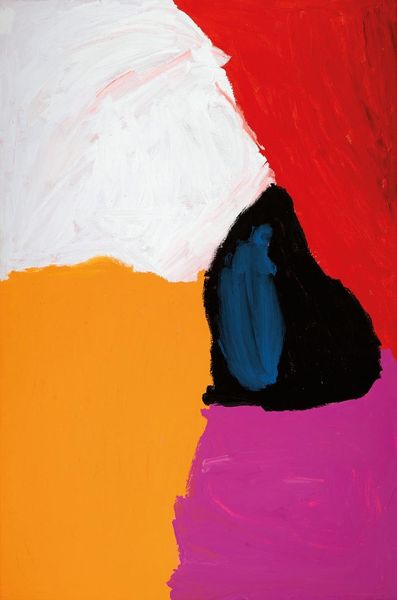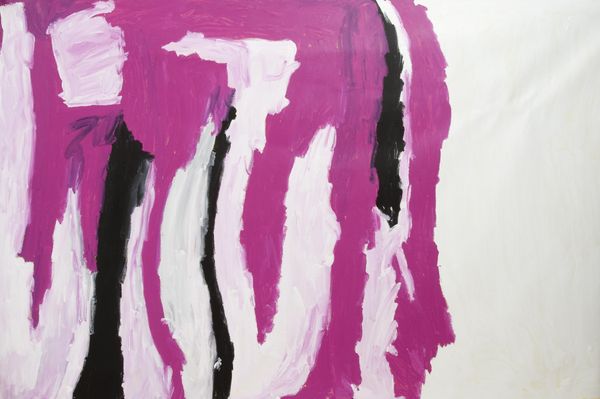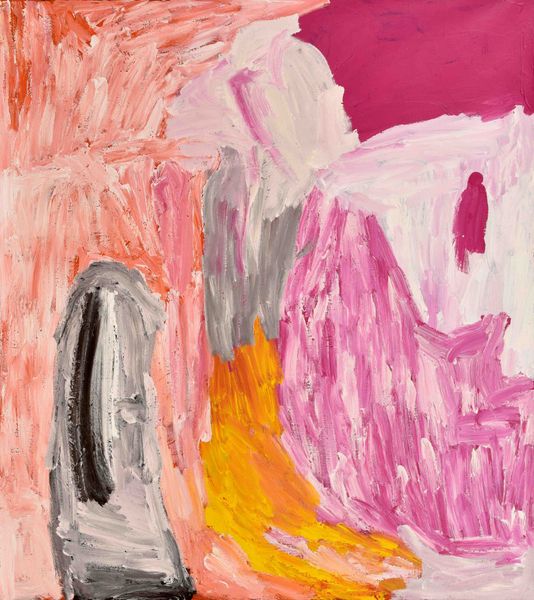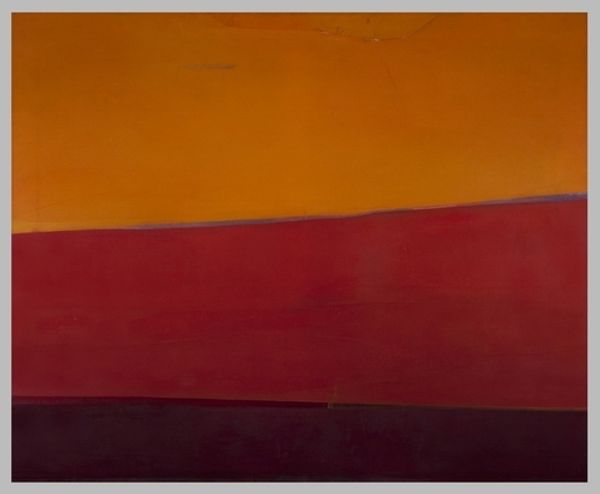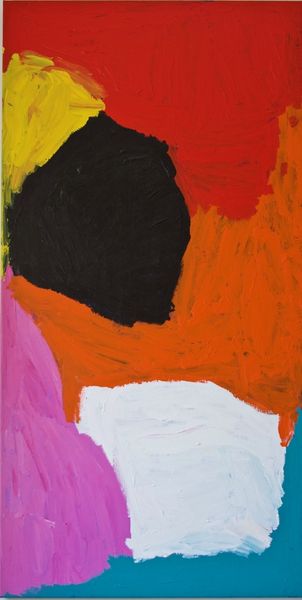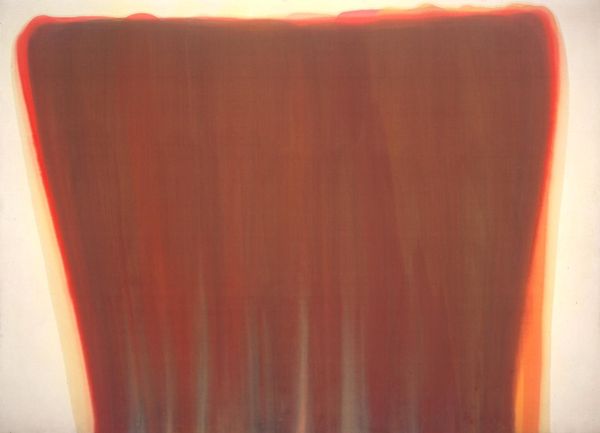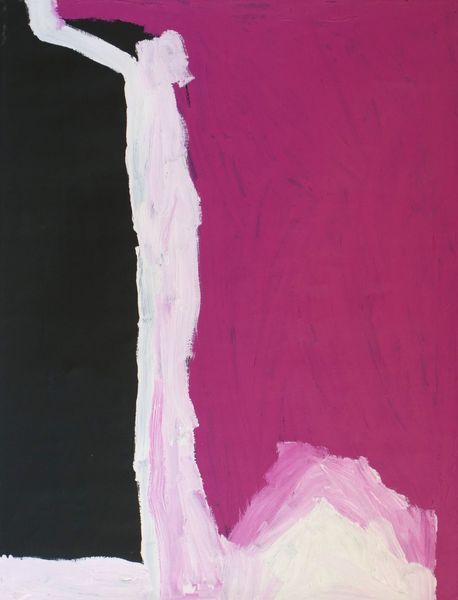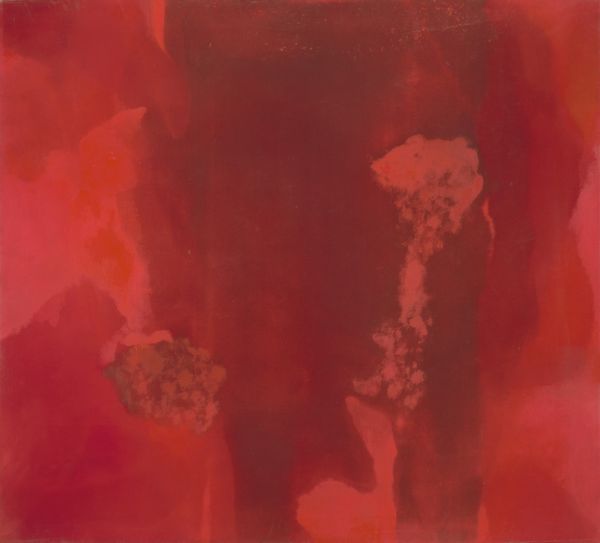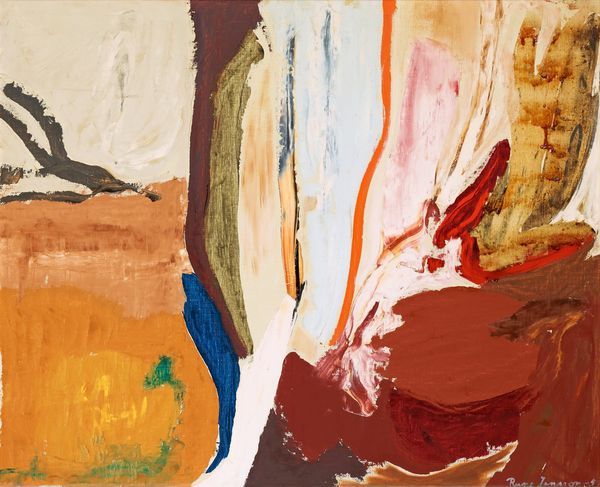
Copyright: Sally Gabori,Fair Use
Curator: We’re looking at “Dibirdibi Country,” an acrylic on canvas painted in 2012 by Sally Gabori. Editor: Immediately, I’m struck by the raw energy of the piece. Bold, sweeping colors – predominantly ochre, deep purple, and vibrant yellow. It's almost primal in its simplicity and scale. Curator: Considering Gabori’s age when she started painting—around 80 years old—and her connection to Bentinck Island, her homeland, one has to acknowledge the significance of material availability. Acrylic paint provided an accessible, durable medium for her to share stories and depictions of her Country. Editor: Precisely. And how this accessibility perhaps contributed to the sheer prolific output we see in her later years, radically shaping our understanding of Indigenous artistic practice in modern exhibition spaces. How do we, as institutions, support such late-blooming artistic production and ensure that resources are readily accessible, not just for well-established artists, but for these emerging voices from previously marginalized communities? Curator: The dominance of large blocks of color isn't arbitrary, it seems integral to representing the landscape. Looking closely, one can almost discern topographical formations in how the paints merge. Editor: And doesn't the unblended nature of the application signal more about the process? Her focus appears not to emulate realism, but capture essence of place, embedded within its complex cultural meaning that we have yet to uncover. Perhaps what's paramount here are the cultural contexts that produced these landscapes? Curator: Gabori started painting her homeland due to displacement when the Presbyterian Mission removed her people from Bentinck Island to Mornington Island after a cyclone. This removal initiated what we now regard as cultural genocide. Editor: These sweeping swathes, seemingly naive at first, conceal decades—centuries even—of social, political, and environmental struggles embedded within the artist's memory, which is manifested into each singular brushstroke. Thinking about museum accessibility, the accessibility of the historical context—the cultural genocide that took place here—is crucial for the correct consumption of Gabori's artwork. Curator: Absolutely, I can view this painting entirely different when knowing that fact. Thank you. Editor: My pleasure, now let's think about our social responsibility in decolonizing museums.
Comments
No comments
Be the first to comment and join the conversation on the ultimate creative platform.
